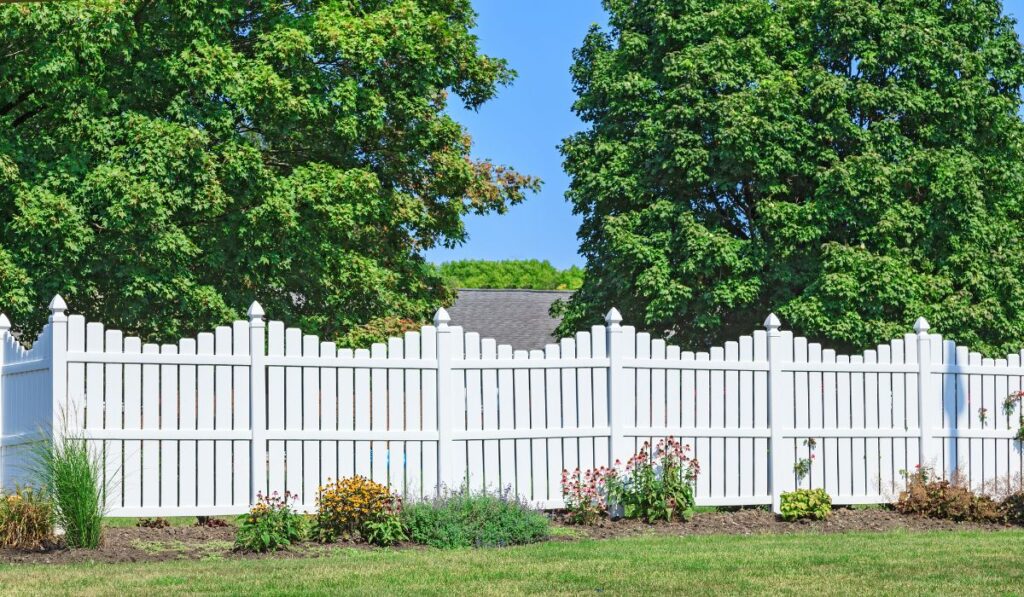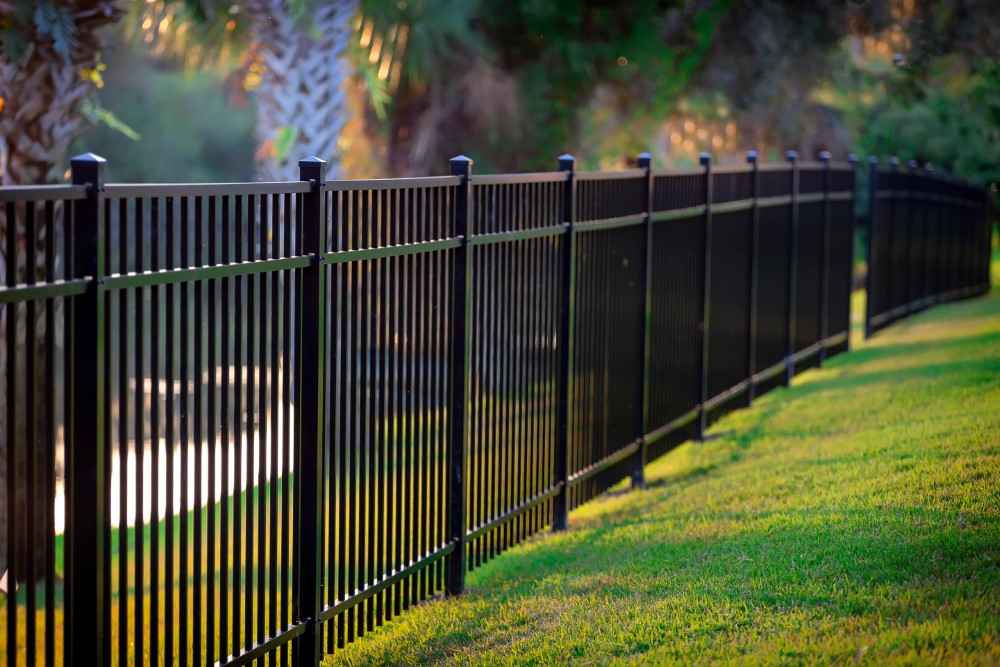
Effective Methods for Cleaning Vinyl Fencing
Vinyl fencing has become increasingly popular due to its durability, low maintenance, and aesthetic appeal.
However, like any outdoor structure, it requires regular cleaning to maintain its pristine appearance.
This article will explore various practical methods for cleaning vinyl fencing, ensuring it remains attractive and long-lasting.
Understanding Vinyl Fencing
Before discussing cleaning methods, it’s essential to understand vinyl fencing and why it requires specific care.
Vinyl fencing is made from polyvinyl chloride (PVC), a durable plastic material resistant to rot, insects, and weather damage, making it a popular choice for homeowners.
Despite its resilience, vinyl can accumulate dirt, mold, mildew, and stains over time, necessitating regular cleaning.
Routine Maintenance
Regular cleaning is vital to keeping your vinyl fence looking new. Here are some routine maintenance steps you can follow:
- Hose Down the Fence: Use a garden hose with a spray nozzle to rinse off loose dirt and debris from the fence. This should be done every few weeks to prevent buildup.
- Inspect for Stains and Growths: Periodically check your fence for stains, mold, and mildew. Early detection makes cleaning easier and prevents permanent damage.

Basic Cleaning Method
For general cleaning, a simple solution of water and mild detergent is effective. Here’s how you can do it:
Mix the Cleaning Solution:
- Combine warm water and a small amount of mild dish soap in a bucket.
- Alternatively, you can use a vinyl fence cleaner available at hardware stores.
Scrub the Fence:
- Dip a soft cloth or sponge into the solution.
- Gently scrub the fence, starting from the top and working your way down. This prevents dirty water from streaking clean areas.
Rinse Thoroughly:
- Use a garden hose to rinse off the soap residue.
- Make sure to remove all soap to avoid leaving streaks on the fence.
Removing Stubborn Stains
Stubborn stains such as grass, grease, or tar can be more challenging to remove. Here are some effective methods:
Baking Soda Paste:
- Create a paste by mixing baking soda with water.
- Apply the paste to the stained area and let it sit for 10-15 minutes.
- Scrub gently with a soft brush or cloth, then rinse thoroughly.
Vinegar Solution:
- Mix equal parts white vinegar and water in a spray bottle.
- Spray the solution on the stained area and let it sit for a few minutes.
- Wipe the area with a cloth or sponge, then rinse with water.
Magic Eraser:
- Use a magic eraser sponge to tackle tough stains.
- Dampen the sponge and gently scrub the stained area.
- Rinse with water to remove any residue.
Dealing with Mold and Mildew
Vinyl fencing can be susceptible to mold and mildew, especially in damp or shaded areas. Here’s how to address this issue:
Bleach Solution:
- Mix one part bleach with five parts water in a bucket.
- Wear gloves and protective eyewear for safety.
- Dip a brush or cloth into the solution and scrub the affected areas.
- Rinse thoroughly with water to remove all bleach residue.
Commercial Cleaners:
- Use a commercial mold and mildew cleaner specifically designed for vinyl fencing.
- Follow the manufacturer’s instructions for application and safety precautions.
Power Washing
Power washing is an efficient way to clean large sections of vinyl fencing, but it should be done carefully to avoid damaging the material. Here are some tips for using a power washer:
Choose the Right Pressure:
- Use a pressure washer with a maximum pressure of 1,500 to 2,000 PSI.
- Higher pressures can damage the vinyl surface.
Use a Wide Spray Nozzle:
- Select a nozzle with a wide spray pattern to distribute the pressure evenly.
- A 25-degree or 40-degree nozzle is ideal.
Maintain a Safe Distance:
- Keep the nozzle at least 18 inches away from the fence.
- Start at a greater distance and move closer if necessary, but avoid getting too close.
Work in Sections:
- Divide the fence into manageable sections.
- Clean each section from top to bottom, ensuring even coverage.
Preventative Measures
To keep your vinyl fence looking its best with minimal effort, consider these preventative measures:
Trim Vegetation:
- Keep bushes, vines, and other vegetation trimmed back from the wall.
- This prevents mold and mildew growth caused by excess moisture.
Apply a Protective Coating:
- Some products are available that provide a protective coating for vinyl fencing.
- These coatings can help repel dirt and stains, making future cleaning easier.
Regular Inspections:
- Conduct regular inspections to identify and address any issues promptly.
- Early intervention can prevent stains and damage from becoming more severe.
DIY vs. Professional Cleaning
While many homeowners can effectively clean their vinyl fences with the methods described, some may prefer professional services for convenience or more intensive cleaning needs.
Professional cleaners have the expertise and equipment to handle stubborn stains, extensive mold, and large areas efficiently.
Advanced Cleaning Techniques
For those who prefer a more meticulous approach, advanced cleaning techniques can be employed:
Steam Cleaning:
- Steam cleaning can be an effective way to clean vinyl fencing without using chemicals.
- A steam cleaner uses high-temperature steam to break down dirt and grime.
- Ensure you follow the manufacturer’s guidelines to prevent damage to the vinyl.
Using a Soft Brush Attachment:
- Attach a soft brush to your power washer for gentle scrubbing.
- This method combines the power of water pressure with the effectiveness of manual scrubbing.
Repairing and Restoring Vinyl Fencing
Sometimes, more than cleaning alone is needed, especially if your vinyl fence has sustained damage or has become discolored over time.
Here are some tips for repairing and restoring your vinyl fence:
Addressing Discoloration:
- Persistent discoloration can be addressed by applying a vinyl restorer product.
- These products can restore the original color and shine of your fence.
Repairing Cracks and Holes:
- Small cracks and holes can be repaired using a vinyl repair kit.
- Follow the instructions on the kit carefully for a seamless repair.
Replacing Damaged Sections:
- For extensive damage, consider replacing the affected sections of the fence.
- This may involve ordering new panels from the manufacturer and installing them.
Conclusion
A clean and well-maintained vinyl fence is a valuable asset to any property.
By following the effective cleaning methods outlined in this article, you can ensure your fence remains in top condition for years to come.
Whether you prefer routine maintenance, tackling stubborn stains, or using advanced cleaning techniques, the key is consistency and care.
Regular inspections, eco-friendly practices, and timely repairs will not only enhance the appearance of your fence but also increase its durability and longevity.
With a little effort and the right approach, your vinyl fence will continue to be a beautiful and functional part of your outdoor space.
If you need professional assistance with cleaning or maintaining your vinyl fence, contact our experts at Bravo Fence Company.
FAQs
What is vinyl fencing made of?
Vinyl fencing is made from polyvinyl chloride (PVC), a durable plastic material that is resistant to rot, insects, and weather damage.
Why does vinyl fencing need regular cleaning?
Although vinyl fencing is durable and low maintenance, it can accumulate dirt, mold, mildew, and stains over time. Regular cleaning helps maintain its appearance and longevity.
How often should I clean my vinyl fence?
You should hose down your vinyl fence every few weeks to prevent dirt and debris buildup. Periodically inspect the wall for stains, mold, and mildew to address any issues promptly.
What are the basic steps for cleaning a vinyl fence?
- Hose Down the Fence: Use a garden hose with a spray nozzle to rinse off loose dirt and debris.
- Mix the Cleaning Solution: Combine warm water and mild dish soap in a bucket, or use a vinyl fence cleaner.
- Scrub the Fence: Use a soft cloth or sponge dipped in the solution to gently scrub the fence from top to bottom.
- Rinse Thoroughly: Use a garden hose to rinse off all soap residue.
How do I remove stubborn stains from my vinyl fence?
- Baking Soda Paste: Mix baking soda with water to create a paste. Apply it to the stain, let it sit for 10-15 minutes, scrub gently, and rinse.
- Vinegar Solution: Mix equal parts white vinegar and water, spray on the stain, let it sit, wipe, and rinse.
- Magic Eraser: Dampen a magic eraser sponge and gently scrub the stain, then rinse with water.
How can I deal with mold and mildew on my vinyl fence?
- Bleach Solution: Mix one part bleach with five parts water, wear protective gear, scrub the affected areas, and rinse thoroughly.
- Commercial Cleaners: Use a mold and mildew cleaner specifically designed for vinyl fencing and follow the manufacturer’s instructions.
Is it safe to use a power washer on my vinyl fence?
Yes, but with caution. Use a pressure washer with a maximum pressure of 1,500 to 2,000 PSI and a wide spray nozzle (25-degree or 40-degree). Keep the nozzle at least 18 inches away from the fence. Clean in sections from top to bottom.
Should I clean my vinyl fence myself or hire a professional?
Many homeowners can effectively clean their vinyl fences using the methods described. However, for more intensive cleaning needs or convenience, professional cleaning services may be preferred.
Tags: Everything You Need to Know About Durable Vinyl Fencing, Everything You Need to Know About Vinyl Fence Colors, Everything You Need to Know About Vinyl Fence Installation, Everything You Need to Know About Vinyl Fence Panels, Everything You Need to Know About Vinyl Fence Styles, Explore Helpful Resources on Cost Of Vinyl Fencing, Explore Helpful Resources on Vinyl Fencing Vs Wood, Explore Helpful Resources on Vinyl Privacy Fences, Inspiration and Tips on Low Maintenance Vinyl Fences, Inspiration and Tips on Vinyl Fencing Benefits
